#media studies and mass communications
Explore tagged Tumblr posts
Text
i know a lot of people tend to define dani/ellie's "obsession" as the ocean to go with danny's space obsession but tbh i feel like as dani gets older she's going to do a lot to separate herself from her identity as danny's "clone" and become her own person
like, that's why i love that the fandom has adopted the "ellie" nickname so much for her. i so wish the show went on for longer with more competent writers or the comic could expand on this maybe but i think finding her own identity and voice would be such a powerful narrative. you're made for one thing but you don't wanna do that, so now what do you do?
(tbh that kind of identity exploration is probably too anit-christian for b*tch h*rtman so i'm glad he didn't get to touch it)
it's canon that dani goes off and travels the world, so why not have her obsession be traveling? she's got a huge case of wanderlust. she likes the outdoors, she likes hiking and camping and is a huge granola girl. like, i think that kinda just fits her a bit more, in my opinion. traveling/exploration.
#danny phantom#dani phantom#ellie phantom#ominous posts#i have a lot more ideas for an aged up everlasting trio too#like college ages#i think sam would dual major in polisci and environmental studies. activist queen#tucker would definitely be computer science but i can also see him being a theater or history kid#danny? i love the idea of him being the black sheep/artist of his family of scientists#but i think he would go for some sort of aerospace engineering obviously.#if he can't be an astronaut because of health reasons/the accident then at least he can help people get up there#though danny becoming NASA's social media manager would also be hilarious. Communications Major Danny?#that's my mass comm degree bias coming through haha#valerie ends up a part of their group at some point and she majors in physical health/exercise#college au? i guess??#cool egde au
64 notes
·
View notes
Text
“you are not immune to propaganda” except it’s “you are not immune to narrative effects”
your brain processes media the same way regardless of whether its intent is explicitly persuasive or not, and the values of what you watch/read uncritically will impact how you think. this is how humans work. there’s a whole field of study about it.
#begging you on bended knee to read a media effects textbook#this isn’t about anyone in particular i’m just thinking about narrative effects#i need to hit all of humanity with my STUDY MASS COMMUNICATION beam#my post
2 notes
·
View notes
Text
We teach our kids to read
We must teach our kids to read media too
We prioritise book literacy
but arguably most kids consume far, far more mass media, and that means learning mass media literacy.
And those skills involve everything OP talked about - critical thinking, self-responsibility, reaching out for support, asking questions about what you're seeing (and getting non-judgemental, compassionate responses that are appropriate for your child), reminders that what they see on TV is rarely real, and 'if a person kept making you feel bad, you'd tell them to stop. If a show keeps making you feel bad in a way that's not okay, you turn that show off, or you come to me or someone you trust and talk about it.'
I once knew a guy who refused to let his kids play video games. He's an Assoc. Professor and is one of the most globally respected orofacial pain specialists in the world. He said they can play when they're in their late teens because there's so much garbage in them.
And I said gently, with my Media Studies background, 'you don't have to listen to me because I'm just here for my absolutely brutal jaw pain, but with all respect, how will your kids know how to negotiate or deal with any difficult, challenging, or overwhelming themes in the games they encounter when they're 16 or 17? How are you preparing them for that world now? Or will you just throw them in the deep end? Because it sounds like you only want the best for your kids. Media literacy is really important, and violent video games are so much easier for any kid to negotiate if they have a parent helping htem out with it, instead of telling them it's all 'garbage' and leaving them to fend for themselves.'
Because he's a great human being, he asked me for a bunch of peer reviewed studies on media literacy, I sent them on over, along with a rec for the book Moral Combat: Why the War on Video Games is Wrong (seriously go read it right now) and he realised that media literacy is at least as important as book literacy.
If you know it's important to teach your kids to read.
Please know it's equally important to teach your kids how to read mass media.
I often see posts about curating your own online experience that make the point, “content creators aren’t your parents.” And, yes, that is absolutely true! And I try not to be like “as a parent,“ but as a parent…
EVEN PARENTS ARE SUPPOSED TO ENCOURAGE RESPONSIBLE READING/VIEWING BEHAVIOR. NOT filter everything ahead of time for their kid.
When my kiddo was 5, his pediatrician was asking him the usual Well Child Visit questions (“What are your favorite foods? What do you do to get your body moving? Do you know what to do if you get lost in a public place?” Etc.) and she asked, “What do you do if you see something on TV that scares or upsets you?”
I piped up like, “Oh, he doesn’t watch TV without one of us in the room,” which was true at the time and is still largely true now. She said, “Yes, but that won’t always be the case, so make sure you’re talking to him about what to do if he sees something that upsets him.”
So we started talking to him about that, and the answer is simple: “Turn it off or leave the room, and talk to someone you trust about what you saw and what you’re feeling.”
The answer is NOT “Ask your parents to make sure you never see anything upsetting again,” because that’s just not possible — and ultimately that would be doing the kid a disservice, since sooner or later he’s going to be out in the world where we can’t control what he watches or reads. That doesn’t mean we don’t try to make sure he’s watching/reading age-appropriate stuff, it just means that’s not the only safeguard he has — and that’s a good thing.
So yes, content creators aren’t your parents and aren’t responsible for making sure you never see anything you don’t like — but also, your own parents should have taught you what to do when that happens. So if they didn’t, take it from me, your internet mom:
Turn it off.
Walk away.
Talk to someone you trust about how you’re feeling.
And leave the person who created the thing that upset you alone.
#and i will die on that hill#media studies#mass communication#media literacy#media education#honestly it should begin as soon as your kids#are watching videos on TV / ipads etc.#we are sadly lagging far behind on teaching kids media literacy#and honestly - very very honestly - it goes a LONG way to explaining#the polarised non-nuanced non-critical-thinking approaches we see from all ages#in response to all information in the mass media#with the exception of folks who have learned critical thinking through other applications or awesome parents#anyway huge respect to OP for really prioritising what matters here#but it can help to call it what it is - media literacy#teach your kids to be media literate#because the media illiterate become antis and conspiracy theorists
58K notes
·
View notes
Text
I'm so frustrated by the lack of response to the mass psychogenic illness of law enforcement officials claiming to suffer contact fentanyl poisoning. There were a few studies done that quietly concluded that it's not real, none of the cases were credible, and the symptoms most closely resemble a panic attack or somatic episode.
No one is connecting this to systemic issues in police training and culture and no one is treating this as the canary in the coal mine it is.
Modern police training is functionally cult indoctrination, and intentionally cultivates paranoia. Police learn that everyone is out to get them, danger lurks around every corner, and their only job is to make it home alive after their shift.
They then enter the body of police culture, where questioning the bad behavior of fellow officers is at best strictly socially punished and at worst can get them killed, where they are constantly vigilant to say the right things and portray the right beliefs.
Suddenly, after generations of mainstream culture being generally supportive of police, in the midst of an anxiety-riddled pandemic, there is a highly-publicized backlash against law enforcement. Regular people are saying ACAB, calling cops fascists and murderers and wife-beaters. They're posting officers' service records on social media. Police, unwilling to believe they are evil, experience a cognitive dissonance backlash effect and cling to beliefs that contradict reality.
No one should be shocked - and no one should be hesitant to say - that there is a mental health crisis in law enforcement. They are paranoid, hyper-vigilant, and mired in cognitive dissonance. They have guns and virtually unchecked power to enact violence in their communities. Making up delusional stories about fentanyl is a pretty mild outcome compared to what we should be expecting from these circumstances.
Police aren't just bastards. They're a danger to themselves and others.
26K notes
·
View notes
Text
i’ve come to the bizarre realization that, despite being a film major focused on screenwriting, based on the classes ive already taken + am enrolled to take, im far more capable of completing a minor in religious studies than creative writing
#and im not gonna lie the MA program for humanities and religious studies is. more enticing than the creative writing MA. what have i become#it’s always so funny to take some of these hrs classes because a big portion of the students taking them are always like. you know.#actually religious. and i am not in the slightest. if anything im extremely skeptical of a lot of religious structures and their intentions#but anyway. yeah I don’t know what im doing anymore man. it’s becoming more and more apparent to me that there is#some likelihood i will end up in academia instead of like. media production. and im not sure what to think of that fact#on one hand: im turning into my parents and that’s horrifying#on the other hand: i might have a shot at a decent salary + benefits and i want to learn things forever and ever#it’s so weird getting to this point in my college career and being like wait hold on what do you mean I only have a few semesters left.#there are still 800 classes i want to take. for funsies. for enrichment. and almost none of them have anything to do with my major#logically the answer to that would be grad school#I don’t knooowwwww I don’t know#everything’s connected if you think about it#film -> mass media -> communication -> psychological manipulation -> interpretation of history and current events -> effectivity#of religious indoctrination and influence -> etc etc etc#anyway I should go to fucking bed#kibumblabs#whatever the fuck milo miniminuteman has going on. that’s what i wanna do#sort of#but you know less archaeology more history and social studies. anthropology overlaps though#and I guess that’s a reasonable goal considering he’s like. I think a year younger than me. bizarrely
1 note
·
View note
Text
Bachelor of Arts (BA) Journalism and Mass Communication Admission, Eligibility, Subjects, Scope
In an era dominated by the rapid exchange of information, the field of journalism and mass communication plays a pivotal role in shaping public opinion and informing society. A Bachelor of Arts (BA) in Journalism and Mass Communication equips students with the skills and knowledge necessary to thrive in this dynamic industry. This blog will explore the intricacies of pursuing a BA in Journalism and Mass Communication, including admission processes, eligibility criteria, syllabus details, and potential career paths.
What is BA Journalism and Mass Communication?
BA Journalism and Mass Communication is an undergraduate degree program designed to provide students with a comprehensive understanding of the media and communication industries. This program covers various aspects of journalism, media studies, public relations, advertising, and digital media. It aims to develop skilled professionals capable of effectively conveying information through multiple channels.
Why Study BA Journalism and Mass Communication?
Diverse Career Opportunities: Graduates can pursue careers in journalism, advertising, public relations, content creation, and more.
Skill Development: The program hones skills such as writing, editing, researching, and critical thinking.
Industry Relevance: The curriculum is often updated to reflect current industry trends, ensuring students are well-prepared for the job market.
Creativity and Expression: This field encourages creative expression and innovation in various forms of media.
Global Perspective: Students gain insights into global media practices and their impact on society.
BA Journalism and Mass Communication Admission Process 2024
The admission process for BA Journalism and Mass Communication varies across institutions, but it generally involves the following steps:
Application Submission: Candidates must fill out and submit an application form, either online or offline.
Entrance Exam: Many institutions require candidates to clear an entrance exam that tests their aptitude and knowledge in relevant subjects.
Personal Interview: Shortlisted candidates may need to attend a personal interview to assess their communication skills and suitability for the program.
Merit-Based Selection: Some universities offer admission based on academic merit, considering candidates' performance in their qualifying examinations.
BA Journalism and Mass Communication Eligibility
To be eligible for admission to a BA Journalism and Mass Communication program, candidates typically need to meet the following criteria:
-Completion of 10+2 or equivalent from a recognized board with a minimum aggregate percentage (usually around 50%).
-There is generally no upper age limit, but candidates should check specific requirements of individual institutions.
-Qualifying the entrance exam, if applicable, is mandatory for admission.
BA Journalism and Mass Communication Subjects
Introduction to Journalism
This subject provides an overview of journalism as a profession, covering its history, principles, and the role of journalists in society. It introduces students to the basic concepts, ethics, and responsibilities of journalism.
Media Laws and Ethics
The legal and ethical frameworks that oversee the media sector are examined in this course. It addresses issues including press freedom, censorship, defamation, privacy legislation, and the moral conundrums that beset media workers and journalists.
Reporting and Editing
This course focuses on the methods and abilities needed for editing and reporting news stories. Training in news reporting, interviewing, news story writing, and style, accuracy, and clarity editing are all included.
Advertising and Public Relations
This course examines the principles and practices of advertising and public relations. It covers the strategies used to create and manage brand images, communicate with target audiences, and influence public opinion.
Television and Radio Production
This subject provides practical knowledge of producing content for television and radio. It covers the technical and creative aspects of broadcast production, including scripting, directing, camera work, audio engineering, and post-production editing.
Photojournalism
This subject focuses on the use of photography to tell news stories. It covers the principles of visual storytelling, techniques for capturing compelling images, and the ethical considerations specific to photojournalism.
Communication Theories
This course delves into the theoretical frameworks that underpin the study of communication. It covers various models and theories that explain how information is transmitted, received, and interpreted by audiences.
Media Research Methods
Definition: This subject introduces students to the methodologies used in media research. It covers both qualitative and quantitative research techniques, including surveys, content analysis, audience analysis, and case studies.
Magazine Journalism
The creation and distribution of magazines are the main topics of this course. It addresses the business of magazine journalism, including audience targeting and market trends, as well as writing, editing, and design.
Film Studies
An introduction to the study of film as a medium is given in this course. Along with the different genres and types of filmmaking, it also includes film theory, film analysis, and the history of cinema.
Media Management
The concepts and procedures of media organization management are covered in this course. It covers subjects including financial management in the media industry, human resources, strategic planning, and leadership.
Scope after BA Journalism and Mass Communication
Career Path
Salary Range (Annual INR)
Description
Journalist/Reporter
₹22,00,000 - ₹44,00,000
Reports news and information via print, broadcast, or online media
Public Relations Specialist
₹22,00,000 - ₹44,00,000
Manages public perception of individuals, organizations, or brands through positive publicity.
Content Writer/Editor
₹26,00,000 - ₹48,00,000
Creates and edits content for digital platforms to engage audiences.
Advertising Executive
₹30,00,000 - ₹60,00,000
Plans and implements advertising campaigns across various media.
Television/Radio Producer
₹26,00,000 - ₹52,00,000
Oversees production of TV or radio programs from concept to broadcast.
Digital Marketer
₹34,00,000 - ₹58,00,000
Executes online marketing campaigns through digital channels.
Conclusion
In conclusion, BA in Journalism and Mass Communication opens the door to a world of possibilities in the media and communication sectors. With a robust curriculum and the development of essential skills, graduates are well-equipped to navigate and excel in a rapidly evolving industry. Whether it's reporting the news, crafting compelling content, or managing public relations, this degree offers a solid foundation for a fulfilling career.
Frequently Asked Questions (FAQs)
Q1. What is the duration of a BA Journalism and Mass Communication program?
A1. The program typically lasts for three years, divided into six semesters.
Q2. Is there a specific entrance exam for BA Journalism and Mass Communication?
A2. Entrance exams vary by institution. Common exams include DUET, IPU CET, and others.
Q3. Can I pursue higher studies after completing BA Journalism and Mass Communication?
A3. Yes, graduates can pursue postgraduate degrees like MA in Journalism and Mass Communication or specialized courses in media management.
Q4. Are internships important in this field?
A4. Yes, internships provide practical experience and are highly valued by employers in the media industry.
Q5. What skills are essential for success in journalism and mass communication?
A5. Key skills include strong writing and communication abilities, critical thinking, research skills, creativity, and adaptability.
Visit more blogs.
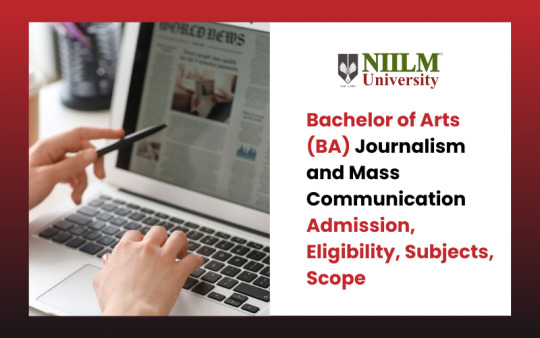
#BA Journalism#mass communication#journalism degree#media studies#course eligibility#communication careers#journalism subjects#media scope#admission process#BA course
0 notes
Text
Sun in houses of Fama(408) Persona Chart
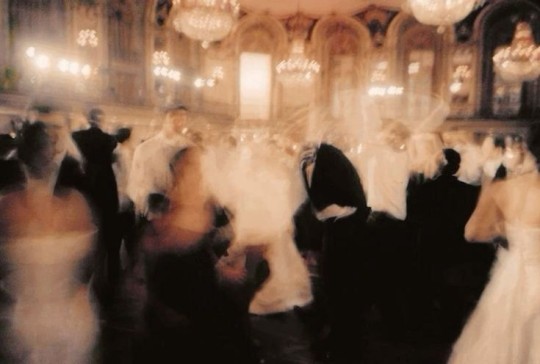

Other related post you might like:
🪄🪄🪄🪄🪄🪄🪄🪄🪄🪄
Planets in houses of Union persona chart
Sun
Moon
---------------------------------------★★
Astro observation 1
Astro observation 2
✨✨✨✨✨✨✨✨✨✨✨✨✨✨✨✨
Groom Persona Chart
Sun
Moon
Mercury
Venus
Mars
Pluto
♦️♦️♦️♦️♦️♦️♦️♦️♦️♦️♦️♦️♦️♦️♦️
Synastry/Composite Chart Observations 1
Review of my readings-1
-------*****----*****--------------*****--------
[PS: These are my personal observations. For entertainment purposes only. Have fun.]


1st House:
Your personal charisma and individuality are the focal points of fame. You are a natural-born leader whose confidence and presence draw attention. Fame is achieved through authenticity and being unapologetically yourself. People are inspired by your courage and personality, making you a trailblazer in your field. However, this placement can attract both admirers and critics, requiring a strong sense of self to handle the spotlight.
2nd House:
Fame comes from wealth, values, or material accomplishments. You may be popular for your capability to create income or for your special manner of handling money. Your talents, especially in creative or entrepreneurial endeavors, can bring fame. Stability and self-esteem are an important part of maintaining publicity. Fame may also be a result of advocating issues on financial literacy or sustainability.
3rd House:
Your fame comes from communication, teaching, or writing. You are popular because of your intelligence, wit, or ability to simplify a complex issue. Social media, public speaking, or journalism may be the source of your popularity. Relationships with siblings, neighbors, or communities will also contribute to your fame. This placement accentuates how your words have the power to inspire and influence the masses.
4th House:
Fame can be due to family history, property, or service to the family and community. You can also be noted for the conservation of traditional knowledge or service to the family or the environment. The fame is very personal and can happen later in your life. You must be very attached to your origins and be emotionally strong to carry your public persona.
5th House:
You are destined for fame in creative fields like acting, music, or art. Your playful, romantic, or dramatic nature captivates audiences. Fame might also come through children, teaching, or entertainment industries. Your ability to inspire joy and creativity in others is unparalleled. This is a highly favorable placement for widespread recognition, but it requires balancing indulgence with responsibility.

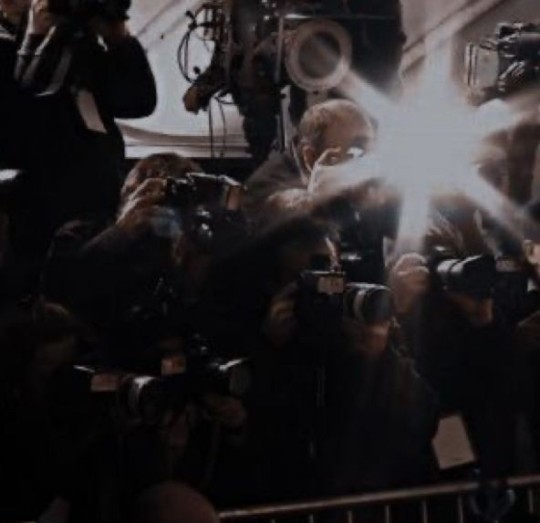
6th House:
Fame comes through hard work, service, or contributions to health and wellness. You might be recognized as a reformer in your workplace or as a healer. Your meticulous attention to detail sets you apart. Fame could stem from achievements in medicine, fitness, or other service-oriented fields. Although the spotlight may feel like a byproduct of your dedication, it ultimately serves a greater purpose.
7th House:
Your reputation may be connected with partnerships or marriage. You can be renowned through a partner, your teamwork, or by fighting for fairness and peace. The way you smooth things over can bring you fame, your appeal, or legal expertise. Partnership is one of your strong points, and people know you as a peacemaker in conflicts or arguments.
8th House:
Fame can come through transformation, taboo subjects, or working with other people's resources. You may be famous for your profundity, mysticism, or ability to uncover that which is hidden. You could even be famous in the realms of psychology, finance, or esoteric studies. Your mysterious nature and the fact that you are willing to discuss life's shadowy areas makes you memorable. This position often provides a transformative public journey.
9th House:
Recognition comes through travel, education, philosophy, or religion. Fame might be tied to teaching, writing, or promoting cultural or spiritual awareness. You are seen as a visionary or a guide who inspires others to expand their horizons. Fame here often comes with international acclaim or through ventures that connect different cultures.
10th House:
This is the traditional placement of Leo for fame and a public career. There, you dazzle others with leadership roles, where accomplishments come out in big ways, including places like politics, business, and professional work that places a demand for visibility. You have won the confidence of all as an icon commanding respect and authority figures. There's a saying, "Your integrity and ethic ensure that this is remembered over the course of time."
11th House:
Fame comes through your associations with groups, organizations, or humanitarian work. You're hailed as a champion for social causes and new developments. You can also become famous through science, technology, or activism. The need to connect through networking and collaborations aids your impact. Your connection to people on a mass scale guarantees you mass recognition.
12th House:
Your fame is spiritual or mystical. You may become famous for spiritual or creative work that affects people's subconscious mind. You can also be considered famous after your death when your work is recognized after your lifetime. This placement typically indicates fame that is associated with retreat, healing, or sacrifice to a cause.
#astro community#astro observations#astrology#astro notes#persona chart#birth chart#horoscope#fama#fama persona chart
251 notes
·
View notes
Text
The Radiant Circle

The Radiant Circle is a work-in-progress contemporary fantasy interactive novel with elemental magic, a heavy hand of romance, and a salt-sprinkle of mystery. The story is rated 18+ and may contain triggering content for some.
↪ introduction (updated 7/22/24) ⟢ demo (upcoming fall/winter)


You were born without any magic into a long lineage of sorcerers who serve the Night Circle—a division of the Radiant Circle, the central governing body that maintains order among sorcerers. Even now when you live outside of the magical community, you’re still required to report to the local leadership about the magic you still don’t have.
Of course, only after having accepted a life without magic, you awaken a latent magical power too great to be yours. Myths speak of such a sorcerer, a Resonant Soul capable of mastering all four elements, reincarnated throughout history to bring balance to the magic community. So little is truly known, but that can’t be you.
But what if it is?
Thankfully, as an investigative journalist, what you do best is hunt for the truth. To unravel the secrets of your soul, you’re forced back into the world of sorcery to navigate ancient rivalries and contend with those who may fear your newfound power and seek to bury it for good.
Because while most didn't believe the myths to be true, others have been preparing for your return. Most of all? You four souls bonded to yours for eternity.

Play as the main character ⟢
Choose your name, appearance, gender, and sexuality.
Develop your personality as a harmonizer or disruptor—will you bring unity or will you bring destruction?
Gain mastery over elemental magic as the Resonant Soul—how much mastery in each element is up to you.
Travel the world while earning or losing influence through your decisions—will your reputation precede you or will you remain unknown?
Five romance options ⟢
Two pansexual men, one lesbian, and two gender-selectable romance options... and a hidden sixth romance option... with the potential for more to unlock later.
Four soulmates who will be revealed over the course of the story—your bonds, whether platonic or romantic, are yours to develop.
And if you don’t like romance, you can improve your friendships instead.
Or if you’re a misanthrope, deteriorate all your relationships to your liking.
Good endings? Check. Bad endings? Also check.


You ✦ 26-year-old journalist from Seattle, USA (ℹ) Rejected by the magical community because your magic never awakened, you once sought to understand why before later turning to a career of journalism to attempt to uncover truths that don’t have to do with magic. Your dissertation was titled “Unveiling the Hidden: A Comparative Study of Secret Societies and Their Influence on Modern Media." After landing your dream job as an investigative journalist, you're returning home to Seattle for your assignment.
⟡ tropes include main character (surprise! you're the main character), insider/outsider, the most wanted (because you are a…), person of mass destruction, (possible) living legend, (possible) lust object, (seemingly) cosmic plaything…
Arseau Nassiet ⟡ High Justicar 31-year-old water sorcerer (he/him) from Seattle, USA (ℹ) A talented water sorcerer, your older brother Arseau is well loved within the Night Circle's upper echelons, but he'd never brag about it. He has been away from home for over a decade, raising ranks within the circle alongside his best friend. He coordinates his visit home with yours during the holidays so he can see his favorite younger sibling (never mind that he has only one sibling—you).
⟡ tropes include protective older brother, brainless beauty (yeah, he's a himbo), the caregiver/caretaker, the confidant (if you want), the informant, nice guy (someone has to keep the peace between the Pico brothers), the reliable one...
César Pico (RO) ⟡ Archumbricar 31-year-old earth sorcerer (he/him) from Tijuana, MX (ℹ) One of the highest ranking earth sorcerers in the world, César is seen as the unofficial heir of the current Night Luminary—and he takes the role seriously. As your brother's best friend, he has been a permanent fixture in your life as far as you remember—another persistent reminder of the magic that has remained inaccessible to you and the community that left you behind. He's at least an attractive reminder, even if it's unfortunate that his rare smirk proves that he knows it.
⟡ tropes include the hero, the cold & brooding heir, older brother's best friend/forbidden love, age gap, opposites attract, danger deadpan, glory hound, tall dark & handsome (obviously) ⟡ solo-route (with a possible rivalry with his brother), borderline enemies to lovers, (possible first love), forced proximity, maybe the slowest burn
Rafa Pico (RO) ⟡ High Justicar 27-year-old fire sorcerer (he/him) from Tijuana, MX (ℹ) The younger brother of César....and also his left hand man even though he doesn't take his position within the Night Circle very seriously. He doesn't take anything very seriously except his freedom. Especially his freedom to flirt his way into anyone's good graces.
⟡ tropes include the explorer, the charming playboy, childhood/long time friend, (his) unrequited crush (on you), the (horny) bard, speed demon, hell seeker, elegant classical musician... ⟡ solo-route (with a possible rivalry with his brother), friends to lovers but he never really saw you as a friend, forced proximity, slow burn

Gazi Gharib (RO) ⟡ Photojournalist 28-year-old (she/her or he/him) from New York City, USA (ℹ) Your roommate and best friend ever since you moved to NYC, they're always ready to help you investigate something new and dangerous.
⟡ tropes include the innocent, the best friend, the encouraging charmer, the serial romeo, the casanova, agent mulder (the believer), empathetic communicator, spirited competitor, the klutz ⟡ solo-route or poly-route with Deniz, besties to lovers (and you can start at the lover bit if you'd like cause this one is a...), faaaaaast burn
Deniz Yılmaz (RO) ⟡ Private Investigator 26-year-old (he/him or she/her) from Istanbul, TR (ℹ) Your next-door-neighbor and childhood best friend. You haven't kept in close contact, but they're the first person you think of seeing when you visit home.
⟡ tropes include the jester, agent scully (the skeptic), street-smart investigator, hardboiled detective, erudite stoner, literal-minded/snark knight combo, childhood friends, loyal supporter, gadgeteer genius ⟡ solo-route or poly-route with Gazi, childhood friends (or was it more?) to lovers, (possible second chance romance...), somewhere between slow and fast burn
Dr. Noel Sung (RO) ⟡ Journalist 41-year-old (she/her) from London, UK (ℹ) Your graduate school mentor who you credit for preparing you to land a job at The New York Times as prestigious as it is. She's now your direct supervisor, and she has quite the assignment for you.
⟡ tropes include the magician, high-powered career woman, absent-minded professor(/former forbidden love?), age gap, charismatic intellectual, intuitive leader, pragmatic idealist, deadpan snarker, determinator, shrinking violet, (your possible unrequited crush on her goes here)… ⟡ solo-route, workplace romance (technically; she's your boss now), slow burn


An ancient, hidden society of sorcerers ⟢
The Radiant Circle is the central governing body that maintains harmony and order among sorcerers, as well as keep their community secret. It was originally formed and led by the Resonant Soul (called the High Guardian—this is you) and the most powerful elemental sorcerers of the time (called the Founding Guardians—these are the four souls bonded to you) as an alliance of sorcerers from across the New Kingdom of Egypt.
After its formation, the magical community grew, and eventually, the Radiant Circle was divided into four smaller regional circles called the Ephemeral Circles: the Night Circle (you know the most about this one), the Dawn Circle, the Day Circle, and the Dusk Circle. These four circles, also called luminariates, are the main governing bodies of the current world of sorcery. Every known family of sorcerers lives under the eye of the Radiant Circle and one of the four Ephemeral Circles.
Only the Resonant Soul can be the High Guardian of the Radiant Circle. Only the four souls bonded with Resonant Soul can be the Founding Guardians. During periods where the Resonant Soul or the Guardians aren’t alive, these positions are left vacant and the Ephemeral Circles meet as the Radiant Council annually instead. Unfortunately, it's been so long since there has been a Resonant Soul that there aren't many people left who remember who sits at the top of the hierarchy.
You live as a Threshold—an uninitiated sorcerer, typically a child who can't use magic yet—within the luminariate called the Night Circle. You sit at the bottom of the hierarchy, but every other sorcerer you know? César is an Archumbricar, the right hand of the Night Luminary and leader of the Night Circle. Arseau and Rafa are César's High Justicars, his right and left hands. Your dads even play a role, advising the Luminary from their position in the Night Weave.
A single soul that can control all four elements, reincarnated once again—you ⟢
Before you became the Resonant Soul, you were a child born without magic to two prominent sorcerers sometime before recorded human history begins. Back then, it was common to put the child of every sorcerer through a resonance ritual, even children of sorcerers born without magic who always died in the process. But where there's a will, there's a way, and someone really wanted you to live and created circumstances that bound your souls together—one into endless reincarnation and the other into endless immortality.
You meet the four original Guardians over the course of hundreds of years. Your bonds are unique and have chained the fate of their souls with yours so that they are reincarnated in an endless cycle by your side. Even so, you've lived more lives without them than with them, lived more lives without magic than with it. Almost as if you're fighting a losing battle against knowing your true soul.
Only the Resonant Soul can resonate with all four types of elemental magic, but your magic remains locked away until you regain your memories (how're you supposed to regain memories you don't remember you need to regain? then again, how safe would it be to give you all that power and no recollection of all the mistakes you've made?). The Guardians are known for their extraordinary abilities in one element; their magic isn't sealed away, only their memories (which still isn't convenient—how are you supposed to know who they are if they don't know who they are?).
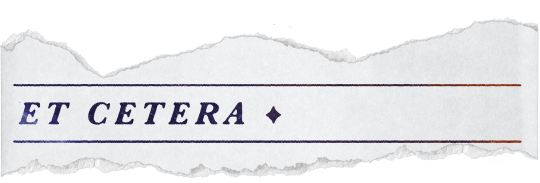
⟢ retweets & asks are welcome! there is no better writing motivation ♡
〉 Sections: Profiles, Editorials, Articles, Ask Me, Answers, Quotes
#radiant circle if#no demo#twine#romance#contemporary fantasy#modern fantasy#magic#fantasy#urban fantasy#mystery#itch.io#interactive fiction#interactive novel#if#wip#fiction#cyoa#choose your own adventure#oh my god why am i so terrified to post this intro#rc editorials
406 notes
·
View notes
Text
I think dan and phil are special but not because they are special people. like don't get me wrong, they are extremely talented and creative and funny and phil does seem to have inherited some kind of special intuition from his northern grandma but! there's a million other queer / neurodivergent people out there just like them... just as talented and intuitive or whatnot. what's special is that they were in the right place / right time to broadcast this unique kind of existence on a mass scale to a broad audience but more importantly a kindred audience. and they've kept it authentic by balancing their entertainment personas and working relationship with their real selves. It's like we've been watching a reality tv series about them for 15 years except they are the producers (who maybe exaggerate some things like producers do but, it's their own choices)... and they never meant for the show to make money but it did so yeah they need it to maintain their lifestyle now but in general their intentions are less clouded by clout or success compared to some influencers/creators out there. What's special is the insane parasocial relationship we have with them and they have with us that truly is a product of a specific context that I don't think will ever quite exist again. They learned from the first YouTubers and mastered the art form to the point where they are able to go on these huge tours that to this day no one can top because YouTube and the Internet have changed far too much with algorithms and advertising and etc. They are a testament to the lost dream of what the internet could be and a showcase of what can happen if you give gay dorks the perfect ingredients to build a media empire. and as a result we know them so intimately as they truly have been open about so much over 15 years and yet they've still kept so much private, to the point where there's still so much that people speculate on. It's like the perfect case study for Web 2.0 media produsage and digital community building amidst the decline of in-person connections because of the progression of capitalism... anyways if by chance there are any phannies getting degrees in media and communications and need help with paper topics and writing please hit me up I'm yearning for grad school again 😭
350 notes
·
View notes
Text
Just a reminder that the voting parties against this aren't the two major parties, I believe the other two that have any punching weight in government are Greens, and surprisingly, the Nationals (make sure you 100% check their stances on other things, they're not typically a queer-friendly political party).
Labor (Liberal Lite) and Liberal are both on board for this, it was a huge reason this bill got passed in the first place. Which means if you're not voting for minority parties specifically, especially the ones that have punching weight and a reasonable chance of getting into parliament, you're fucked on this matter, unfortunately.
I remember talking about this all the way back when OSA (the Online Safety Act) got passed. This is also not the end, expect the gov to now push forward for an Australia-wide forced Digital ID online, in an attempt to end all anonymity / safety for folks on social media. If they can pass something this draconian this quickly, there really is no limit on what they can do to us until we get significant minority party rep in parliament (remember, Labor AND Liberal are in favour of this, so they'll be bipartisan on most things within this scope, imho - complain to your local members, and bolster Greens where you can!).
ETA: I would not get your hopes up about it getting taken down in high court. We don't have constitutional rights around things like free speech etc. we'd have to challenge along the axis of human rights of the child violations.
Australian Social Media News
Australia has passed a law that bans anyone under age 16 from using social media starting late 2025, fining tech companies up to A$49.5M for non-compliance. While intending to address mental health concerns in kids and teenagers, the law raises significant risks for privacy, digital access, and the freedom of expression, raising questions about the boundaries of digital censorship.
With that being said, we don’t expect this decision to affect the OTW or any of its projects, including AO3. However, as the OTW, we are against all forms of censorship and will be releasing a detailed statement about the matter soon.
https://www.reuters.com/technology/australia-passes-social-media-ban-children-under-16-2024-11-28/
#online safety act#mass communications#media studies#andrew przylbylski from the oxford internet institute is so pissed off about all of this#and rightly so#as should we all be#though yeah at the moment there's no indication that AO3 will be#counted as social media#with no grandfathering (i.e. your accounts aren't exempt if you made them before this law)#and no parental exemption#and no teacher exemption#while everyone else was distracted by the US dystopia#we have well and truly had our own going on in the background#never forget that Trump was inspired to make his immigrant camps#speciflcally because of Australia and the ones we've had for decades
2K notes
·
View notes
Text
"Parents of tweens will likely be aware of the daily battle over when to give their child a smartphone. They are probably forced into discussing it over breakfast, on the school run, at bedtime – after all, no kid wants to be left out if their friends all have one.
Which is why a town in Ireland came together to devise a solution.
Parents and teachers in Greystones, County Wicklow, launched a town-wide ‘no-smartphone code’ in May, when headteachers from the town’s eight primary schools wrote to parents asking them to sign up to the ban. By coming together en masse, the thinking went, parents could do away with the peer pressure around smartphone ownership.
Now, ministers in the Irish cabinet have approved new guidelines on the banning of smartphones in school, which were brought by education minister Norma Foley on 7 November. The proposals would help parents to collectively implement smartphone bans, with government support. Ministers are also considering outlawing the sale of smartphones to all children of primary school age.
“We can already see smartphones creeping into our primary schools,” explained Rachel Harper, headteacher at St. Patrick’s school, which led on the initiative. “Parents, even at the junior end, were already getting worried about what age their kids were going to be asking for smartphones.”
Parental concerns around the dangers of smartphones are justified, according to the latest scientific research. In 2020, a systematic review of academic studies investigating smartphones, social media use and youth mental health found that, in the last 10 years, mental distress and treatment for mental health conditions had risen in parallel with the use of smartphones by children and adolescents...
There’s also a desire, said Christina Capatina, a Greystones parent whose daughters are aged 11 and nine, to prioritise face-to-face interactions over digital ones for as long as possible. “Childhood is getting shorter,” she said. “It’s really important for them to be in a place where they can be happy and enjoy being out, just being children.”
Parents in Greystones are now empowered to hold off giving their kids access to the devices until the age of 12, when they transition to secondary school in Ireland.
Eight months since the ban came in, what has its impact been? “It has completely solved the problem,” said Capatina. “Instead of having long conversations about it, this is so simple.”
The code is voluntary, so some parents have chosen not to take part, but enough have signed up to create a sense of phoneless-ness being the norm. While some in the media have argued that the code demonises technology, Harper refutes this: “We’re not against technology. We’re not against phones. We’re just simply asking them to wait till secondary school.” [Again, that's age 12 in Ireland.]
She said the launch of their no-smartphone code led to school principals all over the world getting in touch with messages of support, an indication it seems of how universal parents’ fears over childhood smartphone use are.
And with ministers now working on guidelines for communities that wish to follow in Greystones’ footsteps, Harper is proud of all she and fellow parents have achieved. “It’s nice to be an ambassador in a positive way,” she said.
-via Positive.News, November 17, 2023
#smartphone#parenting#primary school#technology#big tech#mental health#teen mental health#ireland#peer pressure#protecting children#good news#hope
418 notes
·
View notes
Text
College Major Headcanons:
[Extra content for The Homo Economicus in Love - noritoshi kamo x reader, cute college au]
Yuuji Itadori - Media Studies, on a full sports scholarship even though he's not too interested in sports. He doesn't show up to practice that much but carries the team in tournaments. Not really very academically inclined but everyone he meets loves him so much that he's gotten a shit ton of internships and work experience just cuz he's nice to work with. Stays on campus dorms.
Nobara Kugisaki - Fashion Merchandising (yay legally blonde). Another one who's not very academically inclined but does great at the practical aspects of the job. Gets 40% off on tuition, but has some funds from her grandma. also gets money from her fashion blog, part-time jobs at fashion mags, and manages clothing for photoshoots on a freelance basis (if she commits she commits). Saves on residence by renting with Inumaki and Panda.
Megumi Fushiguro - Computer Science with a minor in Math. Full scholarship and bursary grant by the college due to his shitty financial conditions (orphaned and destitute at a young age). Prof Gojo is his legal guardian. grew up in and stays on campus dorms.
Maki Zenin - Star Athlete, literally training for the Olympics. Her degree is in Mass Communications but she doesn't actually have to attend classes cuz the Uni wants her to focus on sports. Disowned by her family. Full sports scholarship and occasionally gets sponsored by sportswear companies. Trying to go pro.
Yuuta Okkotsu - Sociology and Anthropolgy. He enjoys talking to and meeting people and works as a part-time Journalist for local news channels to bring attention to issues like poverty. Gets a bursary grant from the uni, gets paid for and is decently recognized for his journalism work. Both Geto and Gojo want to mentor him. He talks to himself when he's alone but that's a secret.
Toge Inumaki - Architectural Design, chose this degree just for the hell of it, is a solid B+ student. Has a YouTube gaming and ASMR channel with 200k followers but is struggling to monetize it profitably. Got in on legacy admissions but gets a sports scholarship of 30% (he's pretty good at athletics)
Panda - ???
Noritoshi Kamo - Economics and Finance, specializing in Private Equity and Investment Banking. he's the heir of the Kamo Conglomerate. Full legacy admission even though he graduated valedictorian of high school and is the captain of the Archery team.
Todo Aoi - Quantum Physics. he's literally the top student of every class he takes. he keeps taking random other classes from different majors based on his whims. his genius was recognised and personally mentored by Yuki Tsukumo, but is now undergoing formal college education for the certificate even though he already knows all this and more. he spends half the day in the gym and the other half streaming Takada-chan variety clips.
Mai Zenin - Economics and Finance, her family made her take it. good at academics even though she's not super into it. legacy admission.
Momo Nishimiya - Literature and Creative Writing. She posts regularly for a gender and sexuality magazine. loves nobara's blog.
Miwa Kasumi - Computer Science with a minor in Software Engineering. She just wanted a degree that would lead to a well-paying job. Cabinet Member of the Student Council. She vouched a lot for Mechamaru/Kokichi to get disability-friendly accommodation. she struggles a bit with academics but pulls through with A- all around. Kokichi/Mechamaru helps her if she finds something particularly difficult to understand. has her own campus residence but has practically moved in with Kokichi.
Arata Nitta - Health and Medicine, focusing on Emergency Care Medicine. he TAs for Prof Shoko's classes. his sister works in college admin office. has campus residence but mostly stays in the college affilitated hospital, bit of an over-worker.
Mechamaru/ Kokichi Muta - double major in Computer Science and Mechanical Engineering. Another top student of his classes. Found it a bit difficult to adjust to campus life at first (not enough disability accommodation) but with Miwa's help he got around. campus dorm with Miwa.
Professors!
Gojo Satoru - graduated from top Ivy colleges, has 5 PhDs, and wrote 1000 papers and books, and is the one of the most respected physicist in the world but insists on teaching Intro-level Physics and Math. drives a Bugatti to college. highly competitive relative grading. prescribes his own books for his class. expect a problem set every day after class. gives a lot of individual attention to students tho, n is very nice in general. he'll accept a late submission if u bring him sweets. his lockscreen is prof geto?
Geto Suguru - teaches one class named Ethics, Philosophy and Law every semester. doesn't answer questions over email, only during Office Hours. great at explaining difficult concepts, his course is the one students fight to get into and say "opened their eyes". has a devoted cult of worshipping students, voted student favorite every year. his adopted daughters took a gap year to travel abroad and he talks about them in class. he always has sweets in his pockets?
Utahime Iori - teaches modules on Economics, Politics and Philosophy courses. great teacher, very clear explanations, bumps up the grading slightly (absolute grading) and is very accommodating as a prof. hates getting emails at night tho.
Shoko Ieiri - Shitty ass prof tbh but everyone takes her class cuz she gives everyone an A. teaches Surgical Anatomy. focuses on practical experience rather than theory. she has a no attendance policy and takes few very exams or assignments.
Yuki Tsukomo - Visiting Faculty, takes one super high level class Quantum Physical Theory one semester and comes back after 4 years. Independent researcher funded by the uni.
#jujutsu kaisen#jjk#jjk yuji#yuji itadori#jjk nobara#nobara kugisaki#jjk megumi#megumi fushiguro#jjk maki#maki zenin#yuta okkotsu#jjk yuta#inumaki toge#jjk inumaki#panda#jjk panda#jjk noritoshi#noritoshi kamo#jjk mai#mai zenin#jjk momo#jjk nitta#todo aoi#kasumi miwa#jjk miwa#mechamaru#gojo satoru#suguru geto#geto suguru#yuki tsukumo
79 notes
·
View notes
Text
The Game of Common Interests: The Symbiotic Relationship of Terrorism and The Media
Mass media and terrorism have developed an interdependent relationship. The media is the terrorist’s breath of fresh air, and it is the lifeblood and sustenance of terrorism, where the media often capitalizes on the public's confusion, intrigue, and paranoia following terrorist attacks by producing sensationalized news that captures widespread attention. This dynamic, however, plays into the hands of terrorists, who exploit the extensive coverage to spread the agency of their extremist agendas and beliefs, particularly targeting and influencing vulnerable audiences, such as the youth. Professor Taha Najem of Naif Arab University had described this relationship as “symbiotic”.
In Najem's own words:
"As for the extremists, they precisely calculate the scope, location, and timing of their attacks to generate ample media attention,—or in other words, to generate advertisements for their messages on a global scale. The broader and more prolonged the media coverage of terrorism turns out to be, the greater the terrorists' feelings of accomplishment, influence, and power." (Najem, 2017).
Bruce Hoffman, the Director of the Center for Security Studies at Georgetown University said:
"Only by spreading the terror and outrage to a much larger audience can the terrorists gain the maximum leverage potential."
Najem argues that the relationship between the two can be understood through the media's tendency to capitalize on horrific tragedies. It often uses these as newsworthy scoops that not only provide information but also serve as marketing opportunities and profitable publicity. In some instances, the media may unintentionally promote terrorist operations by offering excessive coverage, which is driven by their own incessant need for fame, power, money, and influence. This aligns with the perpetrator's likeness, where some stage attacks often with the sole purpose of gaining publicity and creating propaganda rather than resolving political demands.
Researchers have established that media coverage is pivotal to the success of terrorist attacks, with the scope and intensity of coverage often being more important to terrorist groups than the quality of the reporting. However, this perspective can also be overly simplistic, as it overlooks the complex relationship between media coverage and public reaction. It also fails to consider that not all terrorists prioritize publicity over their other tactical or political aims. Additionally, the complex interplay between the media and terrorism cannot be fully understood without considering the role of the state.
Not only does this occur in mass media, but also creating trends within specific online communities. From this, we can see how there is a benefit in both parties: terrorists gain the publicity they desire, while the media profits from the heightened public interest, increasing the influx of coverage because of the heightened value. Furthermore, many individuals drawn into terrorism have been influenced by channels, websites, magazines, and other forms of media that promote bombings and suicide missions, highlighting the powerful role media can play in the recruitment and radicalization process. With this, here are some ways in which the media benefits terrorism, and vice-versa. Allowing media prevalence through marketability and terrorism through radicalization.
World Trade Center Bombing, 2001.
On September 11, 19 terrorists from al-Qaeda hijacked and attacked the World Trade center, following four coordinated bombing-suicide attacks against the U.S. There were 2,996 deaths and approximately 6,000 injured. Over the past two decades after the attack, mainstream media audiences have witnessed a significant shift in how news was presented: the rise of dramatic and emotional storytelling, or what can be termed as "public drama."

This approach has increasingly dominated the media landscape, being a central focus on various platforms: lead stories on news programs, main broadcast discussions, and bold headlines on newspapers. This had become a prominent framework for delivering news, particularly in television, due to its entertainment-like qualities. By simplifying complex stories into easily-digestible and compelling narratives with vivid images, the audience is more engaged. News organizations and media professionals favor this dramatic approach because of the direct and cost-effective production.
The 9/11 attack is a prime example of this trend. When news broke of a plane crashing into the World Trade Center, broadcasters were initially unprepared for the unfolding catastrophe and the dramatic and chaotic nature of the events presented challenges in conveying the news. With initial coverage featuring footage of billowing flames and smoke from the collapsed towers, the explosion of the Pentagon, and the emergency response—all were easily committed into the viewer's memories. These images captured the raw scale of the disaster and its immediate aftermath. The people were confused, afraid, and intrigued—then they became invested. Thus, the sensationalization of news was adapted.
Oklahoma City Bombing, 1995.
On April 19th, just the second anniversary of the end of the Waco siege, domestic terrorists Terry Nichols and Timothy McVeigh detonated a nitrate-fuel oil bomb in the Alfred P. Murrah Building, claiming 168 lives and injuring 680 others.
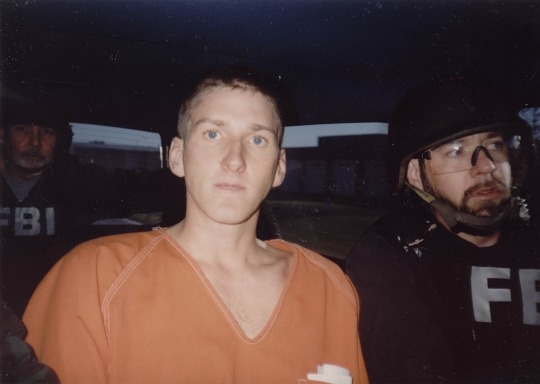

Timothy McVeigh was one of America’s most notorious domestic terrorists, and with his involvement with the crime, he was then sentenced to death by lethal injection. In June 2001, the Federal Bureau of Prisons was responsible for the execution of McVeigh. Linda Smith and John Roberts, in their journal article, delve into one significant instance where media demands placed a heavy burden on the Federal Agency. During this time of McVeigh's execution, the Bureau faced a difficult dilemma: balancing the need to facilitate media coverage of the execution while ensuring the safety and security of the maximum-security penitentiary where it was conducted.
This situation highlights a broader paradox faced by many federal agencies. They are tasked with providing information to the media while simultaneously navigating ethical, budgetary, and legal constraints that limit their engagement in traditional public relations activities, such as advertising and lobbying, common in the private sector. Public affairs officers are legally obligated to release non-sensitive information, yet they must carefully avoid disclosing material exempt under the Freedom of Information Act and Privacy Act, as individual officers can be held criminally liable for such breaches. This tension between transparency and security underscores the complex challenges these agencies must navigate in their public communications.
Boston Marathon Bombing, 2013 and INSPIRE MAGAZINE.
On April 15th, exactly on America's Patriot's Day, Tamerlan and Dzhokhar (Jahar) Tsarnaev detonated two pressure cooker bombs at 2:49 p.m., just a few of hours after the winner completed the Boston Marathon, totaling to 6 deaths and 281 injuries.

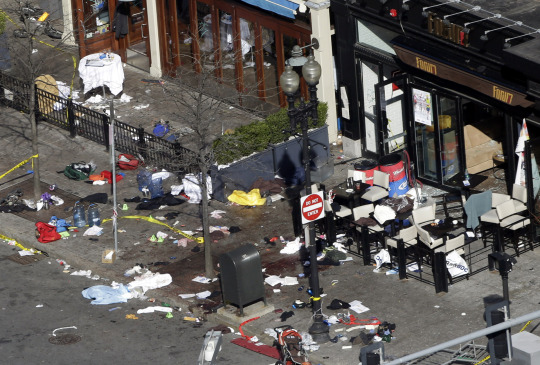
Jahar had a fascination with fireworks and explosives, while Tamerlan exhibited early signs of radicalization. Although there were no proper links of the two to terrorist groups, Jahar had revealed that the two obtained plans from Inspire, specifically its first issue revealing a step-by-step recipe on creating pressure cooker bombs or Improvised Explosive Devices (IEDs).
Inspire is an English online magazine published by al-Qaeda in the Arabian Peninsula (AQAP), infamously known as the group that perpetrated the 9/11 and PAL 434 attacks. The magazine is one of the many ways AQAP spreads its online agenda. Both international and domestic extremists have been motivated by radical interpretations of Islam and, in some cases, used its bomb-making instructions in their attempts to carry out attacks.
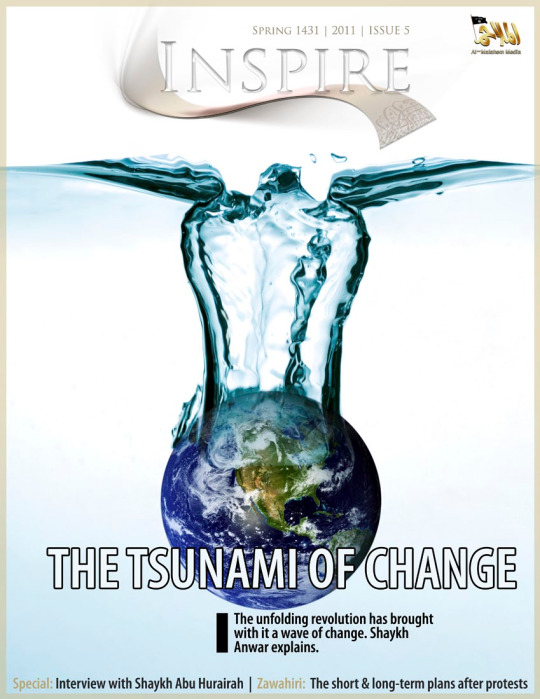


The insurgence of the 'Jihadi John Slideshow Trend'
During the period of 2014, youtube videos uploaded by the Islamic State of Iraq and Syria (ISIS) started surfacing on the internet. This was characterized by a series of masked militants criticizing the American or British government and then tying in the statements by the gruesome beheadings of hostages, ransoms, and soldiers.
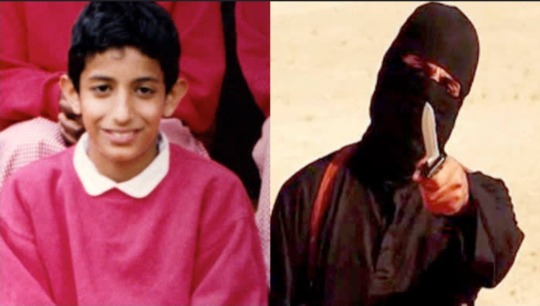
Terrorists had often used their media presence as a driving force to influence the youth into affiliating themselves with terrorist ties. One of these was Jihadi John, unveiled as British militant and Kuwaiti-born Mohamed Emwazi. In these videos, Emwazi is often seen looming over the camera holding a knife and standing next to a kneeled hostage. He ends every video by beheading his victims. One of his most famous videos was the beheading of American Journalist James Foley.
Around June 2010, Emwazi was detained and in the middle of 2020, the insurgence of the “Jihadi John Slideshow” trend had reached tiktok. While the origins of this trend still remains obscure, this has left a lasting impact on the youth. Often, the demographic consisted of teens, specifically young males, who romanticized and glorified the acts of violence portrayed by Emwazi and the aesthetic of militaristic weaponry. Many had credited this behavior to “edgy” standards and humor, however, this idealism was proven to be more unironic than it seemed. Eventually, in the proceeding years, the trend had died out, however, it had came back a few times during period intervals of 2022 to 2023.
This trend had also harmfully villainized harmless ideologies, distorting these ideas to the point where it is repulsing for the public’s perception. An example of this is the concept of Jihad, where it is essentially the Islamic philosophy of struggling to defend the religion and attaining peace within the community and outside of it. It promotes the unity and solidarity of individuals where militaristic action is only done as a last resort of intervention. Often, Jihadi groups such as al-Qaeda and ISIS have spread distorted and extremist versions of this ideology, creating a brand new concept of utilizing violent militaristic resistance to protect Islam. With this dangerous approach, muslim communities are stigmatized, discriminated against, and stereotyped. This is especially harmful because it is a large problem that affects the community in various ways, especially when terrorists rebrand concepts initially striving to attain peace as acts of hatred and war, tainting a beautiful religion with images of violence.
Conclusion
Circling back to Prof. Najem’s analysis, without the media’s attention and focus, terrorists are unable to achieve any of the following four objectives: (1) recognition of the group name or ideology, (2) ability to communicate with supporters, (3) communicate with members of the local government, (4) and depict itself as a legitimate political alternative to the current governments. To conclude this essay, the relationship between mass media and terrorism is a complex and interdependent one, where the intricacies of both entities should be carefully observed and analyzed to unravel the deeper connections between the two.
While some researchers argue that media coverage is essential for the success of terrorist attacks, this view is sometimes overly simplistic and does not fully capture the intricate relationship between media portrayal and public reaction. Additionally, not all terrorist groups prioritize publicity over their other objectives. The symbiotic relationship between the media and terrorism is further complicated by the role of the state, which must balance transparency with security.
Several case studies, including the Oklahoma City Bombing, the Boston Marathon Bombing, and the rise of figures like Jihadi John, highlight the ways in which media coverage can both shape and be shaped by terrorist actions. These examples demonstrate how terrorist groups leverage media to spread their message and recruit new members, while the media, in turn, benefits from the increased attention and revenue generated by such coverage.
Ultimately, this relationship underscores the powerful role that the media plays in both perpetuating and combating terrorism. The challenge lies in finding a balance between reporting news and preventing the unintentional promotion of extremist ideologies.
#understandnotcondone#oklahoma city 1995#timothy mcveigh#world trade center 2001#boston marathon 2013#jahar tsarnaev#tamerlan tsarnaev#jihadi john#mohamed emwazi#trrsm
77 notes
·
View notes
Note
Dear Mr. Gaiman, I saw your Wired interview on mythology support on YouTube, and I would like to ask a question regarding mythological studies if I may: being a British white man as you are, is it okay to study Christianity's mythologies like it's a set of story elements that can be treated as decorationa of commerical products like video games, comic books and novels, or is Christianity something that cannot be toyed with with a light attitude for a Westerner? I'm East Asian myself (my first language is Mandarin and my family is Buddhist) and in East Asia mythological elements are talked about like material to be used in video game design or storytelling, and I know that that can be troubling for the truly Christian communities. So basically what I'd like to ask you is your view on the propiety of using biblical references in commercial fiction or products, especially with regards to taboos like the names of demons, which is often seen in Japanese video games and popular media. Is it okay to view such usage as harmless to the audience such as children or teens?
Good question. I don't know. I was a Jewish kid who was a scholarship kid at a Church of England school, the kind with chapel services every morning, so I was more familiar with High Church Protestant songs and services than with Jewish ones. I was top of the class, always, in religious studies, even though for me they were all just more mythology.
I suspect that my attitude was "if I have to learn this then it's mine to use". If they didn't want me to use it, they were free not to teach it to me.
When Terry Pratchett and I wrote Good Omens, we put a lot of Christianity into it, with me being the one that had actually read the Revelation of St John of Patmos, and made notes on what we needed to include. Good Omens began as humorous look at The Omen, which was itself a mass market film about the coming of the Christian End Times, so we felt one of us needed to have read it for research. Good Omens was also inspired by a particularly antisemitic moment in The Jew of Malta, John le Carre's spy novels and most of all by Richmal Crompton's William books.
I would need a deep dive into what you mean by "harmless" before I could hazard a guess as to whether it was that or not and whether fiction should be harmless or not.
990 notes
·
View notes
Text

The report, “Handcuffed like dangerous criminals”: Arbitrary detention and forced returns of Sudanese refugees in Egypt, reveals how Sudanese refugees are rounded up and unlawfully deported to Sudan – an active conflict zone – without due process or opportunity to claim asylum in flagrant violation of international law. Evidence indicates that thousands of Sudanese refugees have been arbitrarily arrested and subsequently collectively expelled with the UN High Commission for Refugees (UNHCR) estimating that 3,000 people were deported to Sudan from Egypt in September 2023 alone.
“It is unfathomable that Sudanese women, men and children fleeing the armed conflict in their country and seeking safety across the border into Egypt, are being rounded up en masse and arbitrarily detained in deplorable and inhumane conditions before being unlawfully deported,” said Sara Hashash, Deputy Regional Director for the Middle East and North Africa at Amnesty International.
“Egyptian authorities must immediately end this virulent campaign of mass arrests and collective expulsions. They must abide by their obligations under international human rights and refugee law to provide those fleeing the conflict in Sudan with safe and dignified passage to Egypt and unrestricted access to asylum procedures.”
For decades, Egypt was home to millions of Sudanese people studying, working, investing or receiving healthcare in the country, with Sudanese women and girls, as well as boys under 16, and men over 49 exempt from entry requirements. Around 500,000 Sudanese refugees are estimated to have fled to Egypt after the armed conflict erupted in Sudan in April 2023. However, in the following month, the Egyptian government introduced a visa entry requirement for all Sudanese nationals, leaving those fleeing with little choice but to escape through irregular border crossings.
The report documents in detail the ordeals of 27 Sudanese refugees who were arbitrarily arrested with about 260 others between October 2023 and March 2024 by Egypt’s Border Guard Forces operating under the Ministry of Defence, as well as police operating under the Ministry of Interior. It further documents how the authorities forcibly returned an estimated 800 Sudanese detainees between January and March 2024 who were all denied the possibility to claim asylum, including by accessing UNHCR, or to challenge deportation decisions.
The report is based on interviews with detained refugees, their relatives, community leaders, lawyers and a medical professional; as well as a review of official statements and documents and audiovisual evidence. The Egyptian ministries of defence and interior did not respond to Amnesty International’s letters sharing its documentation and recommendations, while the Egyptian National Council of Human Rights, the national human rights institution, rejected the findings claiming that authorities comply by their international obligations.
The spike in mass arrests and expulsions came after a prime ministerial decree issued in August 2023 requiring foreign nationals in Egypt to regularize their status. This was accompanied by a rise in xenophobic and racist sentiments both online and in the media as well as statements by government officials criticizing the economic “burden” of hosting “millions” of refugees.
It has also taken place against the backdrop of increased EU cooperation with Egypt on migration and border control, despite the country’s grim human rights record and well-documented abuses against migrants and refugees.
In October 2022, the EU and Egypt signed an €80 million cooperation agreement, which included building up the capacity of Egyptian Border Guard Forces to curb irregular migration and human trafficking across Egypt’s border. The agreement purports to apply “rights-based, protection oriented and gender sensitive approaches”. Yet, Amnesty International’s new report documents the involvement of the Border Guard Forces in violations against Sudanese refugees.
A further aid and investment package, under which migration is a key pillar, was agreed in March 2024 as part of the newly announced strategic and comprehensive partnership between the EU and Egypt.
“By cooperating with Egypt in the migration field without rigorous human rights safeguards, the EU risks complicity in Egypt’s human rights violations. The EU must press Egyptian authorities to adopt concrete measures to protect refugees and migrants,” said Sara Hashash.
“The EU must also carry out rigorous human rights risk assessments before implementing any migration cooperation and put in place independent monitoring mechanisms with clear human rights benchmarks. Cooperation must be halted or suspended immediately if there are risks or reports of abuses.” Arbitrary arrests from streets and hospitals
The mass arrests have mostly taken place in Greater Cairo (encompassing Cairo and Giza) and in the border areas in the governorate of Aswan or inside Aswan city. In Cairo and Giza, police have conducted mass stops and identity checks targeting Black individuals, spreading fear within the refugee community leaving many afraid to leave their homes.
Following arrest by police in Aswan, Sudanese refugees are transferred to police stations or the Central Security Forces camp, an unofficial detention place, in Shallal region. Those arrested by Border Guard Forces in Aswan governorate are detained in makeshift detention facilities including warehouses inside a military site in Abu Simbel and a horse stable inside another military site near Nagaa Al Karur before being forced into buses and vans and driven to the Sudanese border.
Conditions in these detention facilities are cruel and inhumane, with overcrowding, lack of access to toilets and sanitation facilities, substandard and insufficient food, and denial of adequate healthcare.
Amnesty International also documented the arrest of at least 14 refugees from public hospitals in Aswan, where they were receiving treatment for serious injuries sustained during road accidents on their journeys from Sudan to Egypt. Authorities transferred them – against medical advice and before they had fully recovered – to detention, where they were forced to sleep on the ground after surgery.
Amira, a 32-year-old Sudanese woman who fled Khartoum with her mother was receiving treatment at an Aswan hospital following a car crash on 29 October 2023 that left her with fractures to the neck and the back. Nora, a relative of Amira, told the organization that the doctors told her she would need three months of medical care, but after just 18 days police transferred her to a police station in Aswan where she was forced to sleep on the ground for around 10 days. Cold and rat-infested detention facilities before collective expulsions
Amnesty International’s Evidence Lab reviewed photos and verified videos from January 2024 of women and children sitting on dirty floors amidst rubbish in a warehouse controlled by Egyptian border guards. The former detainees said the warehouses were infested by rats and pigeon nests and those detained endured cold nights with no appropriate clothing or blankets. Men’s warehouse conditions were overcrowded, with over a hundred men crammed together and limited access to overflowing toilets, forcing them to urinate in plastic bottles at night.
At least 11 children, some under the age of four, were detained with their mothers at these sites.
Israa, who has asthma, told Amnesty International that guards at the overcrowded horse stable near Nagaa Al Karur village ignored her request for an inhaler, even when she asked to buy one at her own expense.
After periods of detention ranging from a few days six weeks, police and Border Guard Forces handcuffed males and drove all detainees to the Qustul-Ashkeet border crossing and handed them to Sudanese authorities, without individualised assessment of risk of serious human rights violations if returned. None was given the opportunity to claim asylum even when they had registration appointments with the United Nations High Commissioner for Refugees (UNHCR), asked to speak to UNHCR or pleaded not to be sent back. Such forced returns violate Egypt’s international obligations under human rights and refugee law, including the principle of non-refoulement.
Border Guard Forces expelled Ahmed, his wife and two-year-old child together with a group of roughly 200 detainees, on 26 February 2024, after detaining them for six days in Abu Simbel military site.
Since the conflict in Sudan began, Egyptian authorities have failed to provide statistics or acknowledge their policy of deportations.
70 notes
·
View notes
Text
Are We Returning To 2000s Era Shonen Anime/Manga (A Discussion)
So this is going to be way more of a thinkpiece than I usually do for this blog, but recent trends in the space and niche that I devote a lot of time to, Anime/Manga, have been showing themselves that got me thinking. This is not meant to be a serious sociology case study taken as fact, it's going to be more a theory based on observations of the community that I, like many others, devote a lot of time into than a full on claim, but I do want to ask, is the anime and manga community is experiencing a resurgence in 2000s era shonen manga?
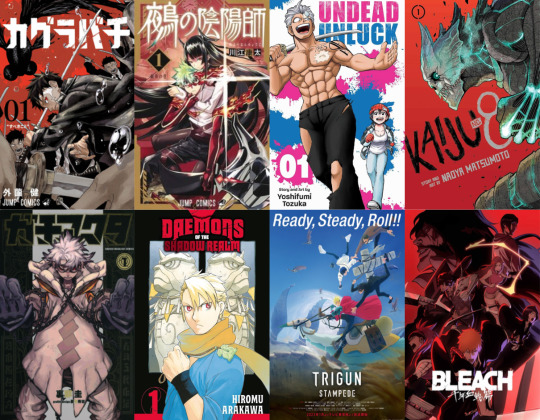
Background
Now let me get this out of the way, there is bias in these observations as I am a western anime fan, but also a North American anime fan. Meaning my gateway and gauges of pop culture are mostly determined by the history of my area of the world’s relationship with anime. From the OVAs of 80s hyper violent and hyper sexual sci fi that you had to purchase from the backs of video rental stores, to the Toonami era of 90s and early 00s programming block the centred around action anime and cartoons, the 4kids era of mass market japanese animated kids shows that were really just giant commercials with some of the earliest memetics in western sphere, and the explosion of shonen battle series in the western sphere in the mid to late 2000s marked by the rise of the colloquially named “Big 3” of shonen jump. I understand that continents like South America or Europe may have undergone a different exposure to the Japanese medium, but as I am going in with some bias in this observation, I would like to make it clear on where the formula is coming from. I also would like to lay down a certain clarification before making this, when discussing the topic of nostalgia I think a lot of people have forgotten what it actually means. If we go by the Cambridge dictionary definition, Nostalgia is “a feeling of pleasure and also slight sadness when you think about things that happened in the past.” This is often invoked when talking about pop culture because people from say 20 years ago don’t seem to enjoy or relate to the interests of today. The belief is that nostalgia is generational ergo if you grew up in the 80s you’re likely wishing to recapture the feelings of childhood that you associate with those trends from 20 years ago. In fact, most revaluation in media has often been catalyzed by a difference of those who grew up in an era rebuffing the opinions of those who didn’t.
There is the well known “20 Year Rule” regarding pop culture nostalgia. That every decade it longs for what was popular 20 years ago. Probably no better example than “That 70s show” being popular in the late 90s, the return of many beloved 80s-90s franchises like “Ghostbusters” returning in the 2010s as well as series like “Stranger Things” that wrapped itself up in 80s aesthetics. DC's New 52 relaunch that seemed to bring back trends from 90s era comics.
Now it goes without saying that the 20 year rule isn’t a “real” rule, rather an observation that certain trends make a return to popularity because the ones who grew up with a certain media will be the ones who add to the discourse when they come of age and will be the ones having a chance to create consumable art for the masses and that may just be revivals of once popular IP. This isn’t necessarily wrong in regards to nostalgia, but I do believe that one doesn’t need to have been born in a certain era to be nostalgic for something when we discuss pop culture. Pop culture is really just trends and preferences that become en vogue and people can acquire a taste at any given time. Sometimes it can be due to those who grew up with something now having the chance to create and drawing upon their own childhoods, sometimes it's just due to not being exposed, other times it can be a certain feeling of disillusionment of the now, and seeking something that peaks your interest, and even sometimes it can be major corporations or networks looking for things with existing audiences to draw upon that actually expand the audience. In fact one of the most prominent Netflix adaptations of the 2020s has been live Action Avatar the Last Airbender and One Piece, both shows that got their start on American televisions in 2004 and 2005. One of the biggest animated shows right now is Invincible, based on a comic book from 2003
So I want to stress this is not necessarily about how if you grew up with the original Mobile Suit Gundam show you are being replaced by the kids who were watching GetBackers. And or if you are a fan of shows that came out in the 2000s you yourself were born in the 2000s.
But what was the landscape of the English speaking anime community like back in the 2000s? Well let me paint a portrait for you.
What was the 2000s like for anime fans?
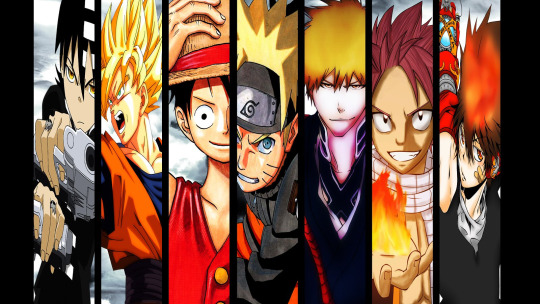
The term I used, “shonen boom period”, is somewhat mythologized in the western anime sphere. There was a glut of high profile shonen anime running around the same time that most people identified with this time period and was arguably when we saw the most influx of people getting into the hobby. One Piece, Naruto, and Bleach served as big series known for their massively large casts, MCs with a level of attitude, some of the most hype centric power supernatural/extraordinary power systems, and certain brand of “Japanese-y” humor. We can’t deny that it wasn’t just these series however, as series like Fullmetal Alchemist became many people’s introduction to more narratively intricate series interspersed with a somewhat gothic action style. The gothic and somewhat edgy Death Note became many fans' first ever “battle series that’s not a battle series” that also incorporated many biblical and gothic horror elements into its presentation. And things like Code Geass also incorporated this combination of hyper stylized cat and mouse with ornate and gothic aesthetics and fighting robots.
Series like Ouran Highschool Host Club and and Haruhi Suzumiya were basically gateways to the more hyper extraordinary slice of life series that didn’t shy away from fanservice and loud comedy. With ecchi like Rosario + Vampire taking it to an even greater extreme. For people willing to go even deeper, series like Fairy Tail began to pop up and share a distinct similar flavor to series like One Piece and Naruto which arguably started the popular conception of it coming from the same magazine as the latter. That’s not also discounting the amount of holdovers from the 90s like Dragon Ball z, Trigun, and Yu Yu Hakusho, which also had an edge towards fantastical combat and comedic oriented series.
All of this is to generally illustrate the media diet of what an average anime fan was expected to have some level of access to. As this was far before the eras of Funimation or Hulu having online services. Not a homogenized spread by any means, and im certain plenty of readers could name more underground or smaller series like Mushishi or Elphen Lied, but generally the popular mainstream you could tell that there was a consistent theme of long form media with a very loud, very flashy, and very action oriented type of series. Which I think is fair to say had skewed some people’s perception. And while I cannot claim with utter certainty that Japan was the same in this regard, you can look at magazines like Shonen Jump and notice a somewhat synchronistic trend. With series like Hitman Reborn, Gintama, D. Gray Man, Eyeshield 21, Bobobobo, etc.making a clear marcation of what was commercially successful at the time. Even series not inside the magazine but had smaller nicher, Tokyo-pop-esque series like Rave Master, Flame of Recca, Air Gear, History’s Strongest Disciple Kenichi, Soul Eater, etc all had a similarity to the shonen jump magazine. To the point it was not uncommon to see so many jump characters in a collage and one from shonen sunday or shonen magazine in there as if this was all coming from the same place.
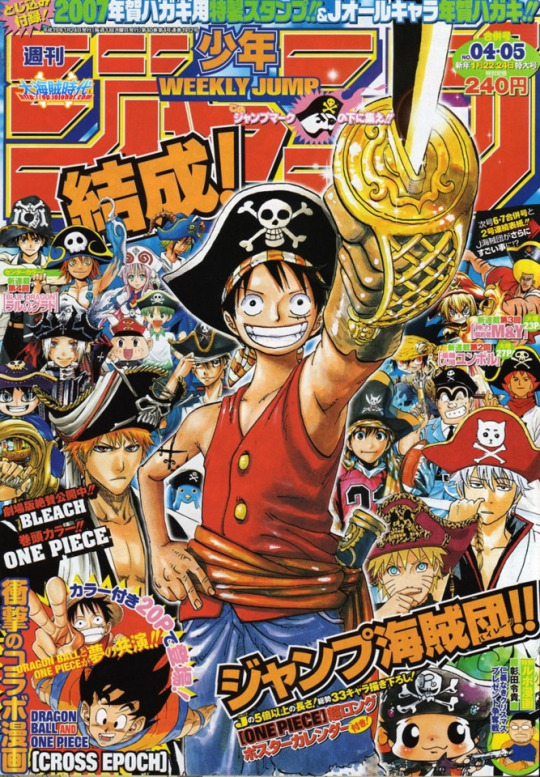
Changing Landscape
Now with the advantages of the modern internet, we have the ability to actually keep up with the jump magazine in real time as opposed to the common practice of relying on scanlation site and fansubs that were often devoted to the most popular works. But with simultaneous publication and services like Crunchyroll, being able to access a wider variety of shows and series that we may or may not have access to. I believe that the 2010s in the english speaking fanbase was the decade we saw a somewhat expansionism of what people perceived as anime. Anime could be One Piece and Naruto, but it could also be Erased, it could be the Promised Neverland, Attack on Titan, K-On, Haikuu, and Durarara. With the representatives of the 90s no longer being holdovers in syndication like dragon ball but rather full on revivals of the likes of Jojo’s Bizarre Adventure and Hunter x Hunter.

All of these could be "shonen" but also other genres like Seinin, Josei, and Shojo all had their own varying layers of what they could be in their demographic
The mood of what was popular was also changing, not just in the fact that more flavors of anime and manga were becoming mainstream, but new works from shonen jump showed a rise in almost subversive series like My Hero Academia and Demon Slayer that seemed to consciously deviate or place new spins from traditional tropes of the 2000s characters, and we saw works that were derivative of previous serious like Black Clover drawing upon Naruto the same way it was known that Naruto had drawn upon Dragon Ball before them. Series like The Promised Neverland and Doctor Stone offered up more dramatic series that still infused a certain energy of the shonen genre.
And of course the series like Attack Titan whose much more darker and gorey storytelling seemed to have become one of if not the biggest hit of the generation with a well regarded adaptation, but something that had felt so removed from what were once contemporaries like the then ending Bleach or Naruto. We can also note that the late 2010s saw the rise of series like Chainsaw Man and Jujutsu Kaisen that began a trend of popular urban fantasy stories. Where fantastical concepts were now in contemporary Japan and the stories that focused on concepts like self identity and the harshness of maturing were juxtaposed to the real world inhabited by monsters.
It seemed many tropes of the previous decade were still alive in the rise of Isekai anime. Which was particularly the only popular outlet for fantasy stories with an action orientation. But these almost felt disconnected from the wider world of manga as things like heavy harem action series had actually decreased in mags like shonen jump. There was also new tropes being established in this subgenre that became unique popularizations of tropes all on their own, such as the overpowered protagonist whose power everyone believes is weak. But many of these were based on light novels, a form of media that only in the last few years western readers are having official access to and not simply scans found on the internet.
We in North America truly have gone from anime being a niche that was primarily accessible through dedicated TV blocks like Toonami, to a full blown cultural relevance shift.
We also need to talk about this era in its perception of the past also shifted. The 90s and the early 00s often blend together as classics of the anime community. Somewhat encased in amber. However, there is no denying that “feels like a 2000s series” had become a bit of a shorthand for very goofy, Very horny, very action heavy series. Series like Fire Force and and Undead Unluck had their show what more problematic elements be equated to the problematic trends of the past that people just accepted as “a part of the medium.” But lets keep in mind, this is not really describing a time, more a trend. Superficial elements that invoke similar feelings of the past.
Speaking of anime fans…
Fan Culture
So while I wanted to paint a picture of creatively the landscape has changed, there’s no denying that in the age of internet accessibility, the anime fan community has also changed. It is much much easier now to get in contact with people who are anime fans now than it was to rely on word of mouth like it was back in the day. I can still distinctly remember my anime club which wasn’t even really a club devoted to anime but rather other geek stuff like D&D and TCGs. Our hobbies just happened to have similar overlap.
Now though, anime fan culture is much more relevant and thriving. Going from just posting weekly reviews, to long retrospectives, comedy videos, abridged series, clickbait articles, fan theories, and podcasts. However, I think a defining feature of fans of the 2000s era of anime that were at their most prominent was hype culture.
Due to many of the biggest anime series at the time being released weekly and focusing on action, many many many discussion boards and videos were often about staying in this cycle of wanting to see what happens next and the action made people very excited to see just how characters were going to win fights or even if they’d have fights at all.
I want to make it clear that this type of activity doesn’t belong to a certain era, but you can see it shaped by the 2000s era. Especially when discussing “what is the next big 3.” As if it were a true position and title, rather than a moment in time where there were just three very distinct shonen series in the fanbase.This doesn’t necessarily have a “negative” effect on the discussion of anime/manga but you can see that certain genres lend themselves to hyping fans up more and more.
Someone isn’t reading the most recent chapter of a romance like Blue Box with the same level of anticipation of who will face who like it was One Piece. But there have certainly been series that try.
The Present
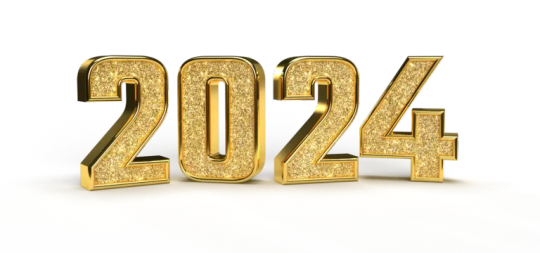
Now we reach the 2020s and this decade is still young, so it is hard to say what the future will hold for certainty, but we can look at the last four years and notice some significant waves being made recently in Shonen Jump alone. I already spoke of Undead Unluck, a series that almost wears it would now be considered retro inspirations on its sleeve. With an opening chapter that establishes an MC that seems motivated by a sexual joke, A power system follows a verbal naming gimmick, and a loose enough world that allows for characters of varying aesthetics and to be incorporated into groups. With groups of these powerful characters splitting up to face each other and use their ridiculous power to the extreme. Even in the series' own meta arc about creating manga, the in-universe analogy for Undead Unluck’s manga is commented on as feeling retro. There is no doubt the biggest viral hit of the decade so far has gone to Kagurabachi, a manga about sword fighting and magical crime lords that seems almost indulgent in its stylistic slicing and or dicing of baddies. Its memetic success was primarily due to a somewhat sincere and somewhat ironic belief that it would be the “next big thing” as it promised to be a stylized action series. Another surprise viral success has been the manga Nue’s Exorcist which sees another supernatural swordfighter boy harness the powers of his sexy spirit lady while getting into harem shenanigans that echo a particular form of ecchi of anime’s past that had actually been somewhat absent in the past decade in jump. Both of these series have a somewhat noticeable similarities to Bleach, a long running shonen action series that has seen its own revival in the last few years of writing this with the long awaited adaptation of the final arc of the bleach anime.
While the other members of the “big 3” never truly went away and became almost inter-generational, Bleach truly did feel like a “come back” as it was absent for so long. And unlike Hunter x Hunter and Jojo which were never really popular in the west and even their older anime are more regarded as anime deep lore. Bleach was one of the most popular series in the west at the time to never receive a conclusion animated.
Speaking of anime of the 2000s Trigun Stampede was a reimagining of the original late 90s show. This errs a bit similar to Hunter x Hunter’s style of revival, but also seems uniquely its own in actually trying to find a balance between the original series but adding in things cut from its original late 90s early 2000s counterpart.
And now we must examine other shonen magazines. Series like Gachiakuta created by a former assistant of Okubo, the creator of Soul Eater, carries with it much of the similar energies of that series. Its also noticeable as being a truly dark fantasy series. Not an urban fantasy, but rather a completely new world that had a very grunge and dirty world building. And then there is Daemons of the Shadow Realm, a series by Fullmetal Alchemist creator Hiromu Arakawa. This series is also set in modern day japan with supernatural elements, however Arakawa’s style of writing is practically unchanged from her time on FMA. With an emphasis on action, intricate mysteries, and character building comedy with her trademark over exaggerated blocky style. There is of course Hiro Mashima who has started another new series, Dead Rock, and his style has also not changed that much. Then there is just flat out sequels to 2000s series like Gamaran Shura.
This to me shows that we are seeing a bit of a combination of people who are now entering the workforce inspired by creators of the past, but also that creators of the past still exist 20 years later and are still making content that hasn’t really undergone significant change.
Of course, we can’t also forget the implementation of the Manga Plus/J plus service which has opened up a very interesting ground for creators to have some of the most creatively out there series than what you may have expected from the shonen jump brand. I genuinely don’t think series like Make the Exorcist Fall in Love or Fire Punch would’ve ever been acceptable in the pages of a weekly shonen series. However one series in particular does feel like it could've and boy its been quite the success. Kaiju no 8.
Kaiju no 8 almost feels as though it is the AoT of a new generation with the amount of anticipation this one series has as well as the similarities between the series superficial elements. However, I'd say the key distinction between the two has been the tone. AoT took a dark and practically dour tone on its titan infested world. With an MC declaring war on all of his enemies. The pain was realistic, with human bodies being brittle and vulnerable. And the belief that just because you were a good person you weren't going to make it out alive. Kaiju no 8 instead opts for a more action oriented tone. Down playing the bleak realism for more "Hell yeah!" moments. With super science weapons that feel more akin to a tokusatsu show and fights and battles between humans an kanji the feel like the Dragon Ball style wrestling matches of old.
And of course, that’s not to say Jump hasn’t continued with series that feel more modern like the realistic and mellow romance of Blue Box or the dramatic coming of age story of Akane-Banashi.
But the presence of these series has caused somewhat of a friction with the popular conception of the magazine. Its safe to say that while “shonen” tends to think of action male oriented series, it can really just mean works aimed more at adolescents. But I think many tend to associate this familiar feeling of “what is shonen” with their popular introduction of the magazine. With a saturation of action and brash comedy series. This is further complicated by the fact many action series in jump are actually ending over the last decade. With new ones not popping up to replace them as frequently and series like One Piece and MHA and Black Clover basically stretching out across an entire decade or longer. In fact, I don’t think it's unreasonable to believe that the hype for something like Kagurabachi was in part a belief that it signaled a return of a type of familiar series and genre that had been missing. Or at the very least, looked to fill an inevitable gap the magazine was obviously going to be facing. Followed by the other commercial success of Nue’s Exorcist, we are likely to see these series last for a long time. At the time of this writing, Tokyo Revenger’s author Ken Wakui has released Astro Royale, a series that feels very similar to his previous work yet infused with this almost GetBackers flavor.
So that leaves us with the question at the start, are we seeing a rise in 2000s nostalgia in anime and manga?
Conclusion
So I'm sorry if I disappoint, but the best I can say is, I’m not certain. I do believe that from my observation I think it is reasonable to say that we are seeing a rise in creators in the shonen space being ones inspired by series from 20 years ago. However, I think we are also seeing creators who are from that time period also returning to write how they have always written.
On the consumer side, I think we can see that fans of anime and manga have changed in the sense their tastes can now be shaped by a much larger catalog of series at their disposal. But in the case of shonen, I think we are simply seeing those who likely got their start in anime at around the 2000s resonating with newer series drawing upon those series, but also with younger fans now likely to grow up with the tail end of what was popular in the 2010s now being influenced by the 2020s. I also believe that one of the defining features of the anime community in the last decade is hype culture. And currently we are seeing a rise in series that actually feel more catered to hype, be it a revival of a series they liked or predicting what will be the next success.
All and all, this piece was trying to tunnel on the shonen demographic in general, which is more likely than not going to have similar traits relative to itself. I do see us as a community endorsing trends of the past and there’s an excitement for these things to “come back” even if they may or may not have left. If you liked this please drop a like or reblog because I may do more of these think pieces in the future.
#anime#manga#think piece#discussion#shonen#shonen jump#kagurabachi#gachiakuta#nue's exorcist#undead unluck#kaiju no. 8#bleach#one piece#naruto#yomi no tsugai#attack on titan
118 notes
·
View notes